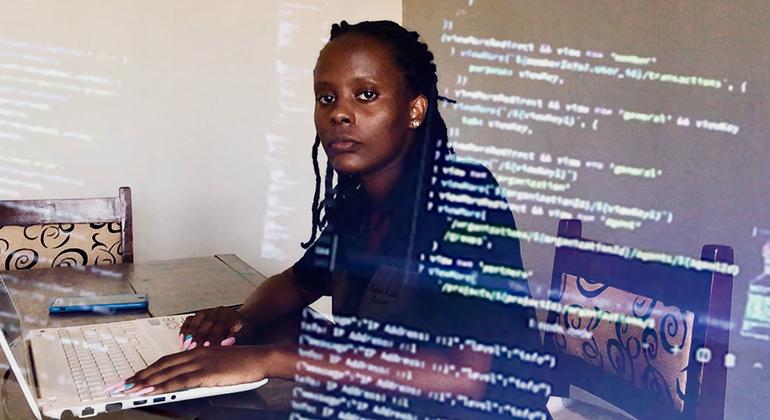|
Getting your Trinity Audio player ready...
|
Many attendees wore suits, scarves or other items of clothing in shades that spanned from periwinkle to indigo, in tribute to women working in tech, a sector that remains overwhelmingly male.
“I see this room seldom so packed and so full of energy. It is a clear indication of the noble goals that we are all celebrating and representing today,” Assembly President Csaba Kőrösi said in his opening address.
Tech jobs on the rise
In joining the call for greater gender inclusion in tech and innovation, Mr. Kőrösi highlighted the connection to the Sustainable Development Goals (SDGs), which provide the blueprint to a just and equitable future by 2030.
He said that by mid-century, 75 per cent of jobs will be related to science, technology, engineering or maths (STEM). However, women comprise just 30 per cent of the workforce in the 20 largest global tech companies in the world today.
Untapped vast potential
Mr. Kőrösi stressed the need to intensify global efforts to achieve SDG 5 on gender equality “and to unshackle the underused potential of the half of humanity.”
“According to some evaluations, the exclusion of women from the digital world has shaved $1 trillion from the GDP of the low-and middle-income countries in the last decade,” he said.
“Worse, if women and other marginalized groups are not given sufficient access to technology, we leave untapped vast additional capabilities to solve the many challenges that we are facing.”
Promise and perils
Technology can also improve the lives of woman and girls around the world, as UN Secretary-General António Guterres observed in remarks to the event, delivered by his Chef de Cabinet, Courtenay Rattray.
It can expand access to education, healthcare and financial services, and also open up new pathways into business and entrepreneurship.
But realizing the promise of technology also means confronting its perils, requiring action that includes closing the so-called “connectivity gap”, as three billion people worldwide are still unconnected to the internet, mainly women and girls in developing countries.
Break the barriers
The Secretary-General called for breaking barriers that keep women and girls offline, such as stereotypes that discourage them from studying science and maths.
Women’s leadership in STEM also must be increased, he added, while the internet needs to be made safe for women and girls, who are “the number one targets” of online hate, abuse and harassment.
Ladies first
The UN chief also pointed to good news, as women are at the forefront of making technology safer, more accessible, more inclusive and better regulated.
Last September, Doreen Bogdan-Martin was elected to lead the UN’s specialized agency for information and communication technologies (ICTs), becoming the first woman Secretary-General of the International Telecommunication Union (ITU) in its 158-year history.
“Times are changing,” she said in her keynote address, sharing stories of how young women are using STEM, for example to increase education access for the visually impaired and to help indigenous communities fight climate change.
Ms. Martin reported on global momentum towards achieving universal connectivity, noting that an ITU-led coalition has mobilized more than $17 billion for “digital gender equality”.
“We also have a unique opportunity…to ensure gender equality happens in our lifetime and not in 300 years,” she said, adding that digital technology can help pave the way. “No more excuses for not having digital gender equality now, everywhere.”
She challenged countries to get more girls into STEM, to ensure equal access to digital technologies and opportunities, and “to give women a seat at the digital table and make gender equality a must in every organization.”

Sima Bahous, Executive Director of UN Women, delivers a speech to mark International Women’s Day 2023.
‘Digital rights are women’s rights’
For Sima Bahous, Executive Director at UN Women, technology and innovation are game changers that offer huge potential benefits.
“If used wisely they can bring us back on track for the SDGs and a more peaceful world. If misused, they can derail our efforts. This is the choice,” she cautioned.
Grasping the opportunities provided by tech, and avoiding potential harms, demands collective action by Governments, civil society, and the private sector, she added.
“Let us assert that digital rights are women’s rights,” said Ms. Bahous, drawing applause from the room. “We need to fix the institutions and the harmful gender stereotyping surrounding technology, innovation and education that fail women and girls, and continue to do so.”


